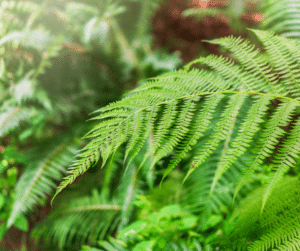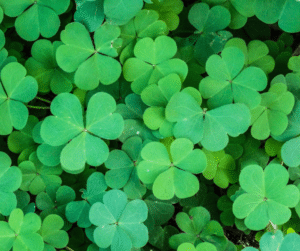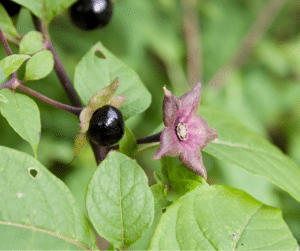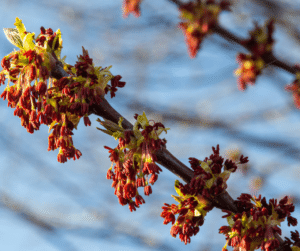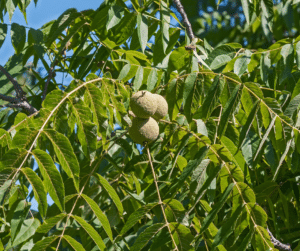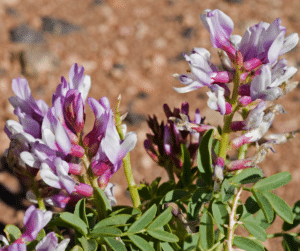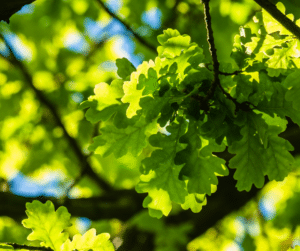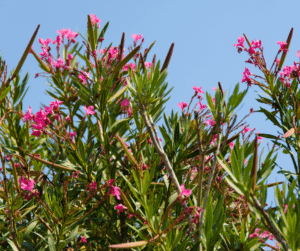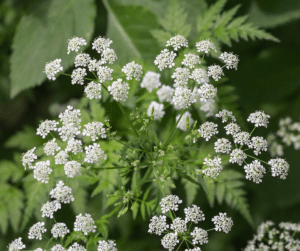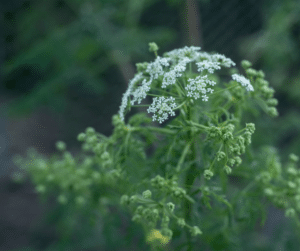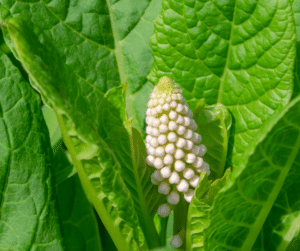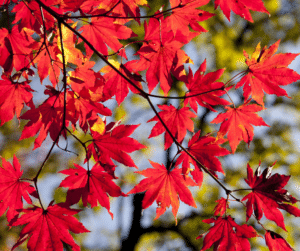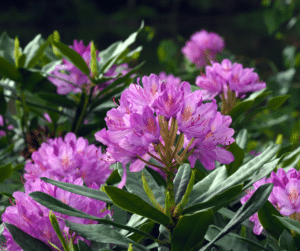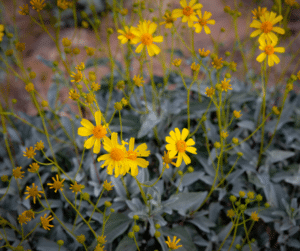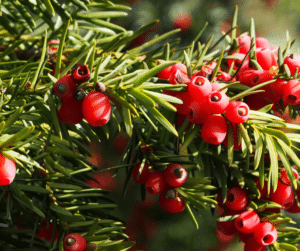Top 15 Plants Toxic to Horses Lurking in Your Pasture
Is your beautiful green pasture actually a field of plants toxic to horses? Like it or not, there are a lot of dangerous plants out there that could cause serious harm – or even death – for your horse. That’s why it’s important for you to understand and be able to identify the top criminals of the plant world lurking in your pastures.
In this article, we’re going to take a look at the worst of the worst. We’ll explain why each plant is so dangerous and share some ideas for how you can protect your horses from danger. The act of poisoning should be left to spy movies and action thrillers. It has no place on your farm!
Without further ado, here are the top 15 poisonous plants to horses lurking in your pastures:
#1: Bracken Fern
Most plants toxic to horses taste gross to them, but not this one!
Some horses actually love to eat the bracken fern, so it’s a good one to know right from the start. This perennial fern tends to grow in clumps in moist open areas and woodlands. Leaves can reach heights of two or three feet.
Your horse would actually need to eat hundreds of pounds of it to start experiencing ill effects. But that’s not out of the question if your horse has access to the plant and enjoys the flavor. That’s why you need to keep it out of your pastures.
After eating too much of this plant, horses will experience vitamin B1 deficiency which leads to neural dysfunctions. This shows up as depression, incoordination, and even blindness. Your vet will likely prescribe large doses of thiamine over the course of one or two weeks to help your horse recover.
#2. Clovers
The rabbit from the movie Bambi sure enjoyed eating clovers, but your horses should stay away as clover is among the top plants toxic to horses. There are several kinds out there, but alsike covers cause horses to experience blistering on their light colored skin (photosensitivity) and liver disease.
Red and white clover, which looks very similar, can also be a problem for horses. The plants themselves aren’t a problem, but they are often infected with a black patch fungus which can cause excessive drooling known as the “slobbers!”
Your best defense is to watch your pastures for either of these plant types and try to promote the growth of grass instead.
#3. Deadly Nightshade
Do you watch what’s in your horse’s hay for toxic plants growing as well? Well, you should.
That’s because deadly nightshade can accidentally be mixed in during the baling process. This poisonous plant to horses is related to the pepper plant and is most often eaten after being accidentally baled into your horse’s hay.
It grows best in sandy soil and dry conditions and has a bell-shaped purple flower and small, round fruits. After being eaten, symptoms will include colic, loss of muscle control, neurological signs, dilated pupils and even death.
#4. Box Elder Maple
For this plant, only the female plants are dangerous!
That’s because the seeds from female box elder maples cause an equine muscle disease called Seasonal Pasture Myopathy. The disease is 75-90% fatal, so it’s definitely not something to take lightly.
Symptoms of box elder poisoning include tremors, weakness, dark urine, rapid breathing, and death. All of this can occur within 48 hours of poisoning.
#5. Black Walnut
Did you ever think about what kind of wood is used in your horse’s stall shavings? Well, if the wood shavings include black walnut wood, you’re in for a problem. Horses bedding on shavings containing black walnut develop edema, colic, and laminitis.
By the way… if you need to cut down a black walnut tree in your pasture, be careful to clean up the sawdust left behind from your chainsaw!
#6. Locoweed
If you live in the West or Southwest, be on the lookout for this “crazy weed” that's among the top toxic plants to horses. After being poisoned, horses will certainly act crazy – bobbing their heads, using exaggerated high stepping gaits, or even staggering and falling down. There’s no treatment for advanced locoism, so you can only hope your horse hasn’t eaten too much.
This plant is so dangerous because it contains a chemical that disrupts the function of brain cells. There are six species and they are leafy perennials with tuft-like compound leaves. White or purple flowers are also easy to find.
#7. Oak Leaf
Oak trees are incredibly common, but don’t let your horses eat the leaves!
Often, horses will only eat from an oak tree if they are very hungry and there is no other food available. Water can also be contaminated by fallen leaves. Signs of oak leaf or acorn poisoning include colic, diarrhea, darkened urine and depression.
#8. Oleander
This evergreen shrub with 3-10 inch leaves and clusters of flowers may be beautiful - but it’s a toxic plant to horses. Eating only 30 to 40 leaves can be deadly to your horse! The main danger is to your horse’s heart.
Oleander is common in hot climates and is used in landscaping across the southern United States. Several hours after ingestion, it will cause colic, difficulty breathing, tremors, and an irregular heartbeat. Luckily, horses can survive if they are treated early. Your vet may feed activated charcoal or drugs to stabilize your horse’s heart.
#9. Poison Hemlock
This perennial weed has toothed, fernlike leaves and small white flowers. You’ll also find purple spots on the stems near the base of the plant. It grows along roadsides and other open areas where your horse might decide to graze.
It only takes four or five pounds of this plant’s leaves, stems, or seeds to kill your horse. That’s because it contains several potent neurotoxins that affect your horse’s central and peripheral nervous symptoms. Lucky for us, horses tend to avoid this nasty weed.
#10. Water Hemlock
This next plant is not only considered a toxic plant to horses, it is actually considered one of the most toxic plants in the country! It grows throughout the United States in marshy areas of meadows and along streams. Less than one pound of the leaves and stems can be fatal.
Water hemlock is a perennial weed with six feet long stems and umbrella shaped clusters of white flowers at the tips. It contains a toxin that affects the central nervous system. Poisoning causes things like excess salivation, dilated pupils, nervousness, fast breathing, seizures, and convulsion. It acts quickly with death within two to three hours.
#11. Pokeweed
We sometimes use the cooked berries from the pokeweed plants in tasty pies. But that doesn’t mean your horses will get the same enjoyment.
These tall plants are found in rich, disturbed soils like barnyards, moist woodlands, and pastures. The whole plant is moderately toxic to horses, but the roots cause the biggest problem. Symptoms include colic and diarrhea and with convulsions.
#12. Red Maple
When autumn rolls around, red maple trees provide a beautiful scene across the Eastern half of North America. Fresh, green leaves aren’t a problem for horses, but wilted leaves – from a fallen branch or autumn leaf fall – are another story!
The maple leaves contain a toxin that breaks down red blood cells so they can’t carry oxygen. Even as little as 1-2 pounds of the leaves can be fatal or cause damage to the kidneys, liver, and other organs.
Look for signs of lethargy, refusal to eat, dark urine, pale gums, increased respiration, rapid heart rate, and dehydration. Your vet will provide lots of intravenous fluids and possibly a blood transfusion to reverse the effects.
#13. Rhododendron
It’s a common landscaping shrub but it’s no friend to your horse. The rhododendron plant is related to mountain laurel and azaleas. They have high toxicity on all parts of the plant and can cause stomach irritation, abdominal pain, unusual heart rate, convulsions, coma, and death.
#14. Tansy Ragwort
This next toxic plant to horses is a weed that is a danger to your horse’s liver! Tansy ragwort is a multi-stemmed weed that produces clusters of small flowers that look like daisies. There are actually 70 species of this plant in the US and are common in pastures and along roads.
If your horse munches on this plant day after day, they will eventually have serious problems. It takes 50 to 150 pounds to cause irreversible damage. Horses may show signs of photosensitivity, lowered appetite, weight loss, depression, incoordination and jaundice as symptoms. There’s no treatment for advanced stages of liver disease so don’t let your horse get into this one!
#15. Yew
We can’t write this article without mentioning this extremely deadly plant. Just a single mouthful from a yew plant can cause sudden death. This woody evergreen shrub has needle-like leaves and bright red or yellow berries with a hole in the end. It’s often used as an ornamental plant.
Horses are most often poisoned with yew after people trim their shrubs and throw the trimmings into a pasture. The leaves and berries contain a chemical that causes cardiac collapse, so avoidance is critical!
6 Steps to Prevent Poisoning from Plants Toxic to Horses
After reading through the list above, you can see that many of these plants don’t give you a lot of time – if any time – to react and save your horse. That is why prevention is key.
As a horse owner, there are several steps you can take to prevent your horse from being poisoned by toxic plants:
-
Identify the toxic plants: Learn to recognize the plants that are toxic to horses and remove them from your horse's grazing areas, paddocks, and pastures.
-
Monitor pastures: Regularly inspect your horse's grazing areas and pastures to ensure that there are no toxic plants growing in or around them.
-
Provide sufficient forage: Ensure that your horse has access to plenty of hay or other forage, especially during times of drought when the grass is sparse.
-
Use fencing: Use appropriate fencing to keep your horse away from areas where toxic plants may be growing.
-
Supervise your horse: Supervise your horse while they are grazing or roaming, especially if you are unsure of the safety of the plants in the area.
-
Consult with a veterinarian: If you suspect your horse has ingested a toxic plant, consult with your veterinarian immediately. They can provide advice on how to manage the situation and help you identify potential symptoms to watch for.
Taking these steps can help ensure that your horse remains healthy and free from the harmful effects of toxic plants.
Frequently Asked Questions
Are sunflowers toxic to horses?
Sunflower seeds are safe for horses and can actually give them a boost of nutrition as they are rich in Vitamin C, B6, Iron, and Magnesium!
Are dandelions toxic to horses?
Dandelions are considered safe for horses. However, there are several "look-alike" dandelion plants that have not been proven to be safe for horses.
How do I get rid of weeds in my horse pasture?
There are several different ways to exterminate weeds from a horse pasture including herbicides, manual removal, or mowing/landscaping.
What is good forage for horses?
The best and most common forage options for horses include legumes, pasture grasses, and hay.
What plants cause laminitis in horses?
The most common toxic plant to horses that displays laminitis as a symptom is black walnut.
Why do horses eat poisonous plants?
Research suggests that horses opt for toxic plants largely out of hunger. The best defense for horse owners to keep their horses away from ingesting toxic plants is to provide adequate forage.

